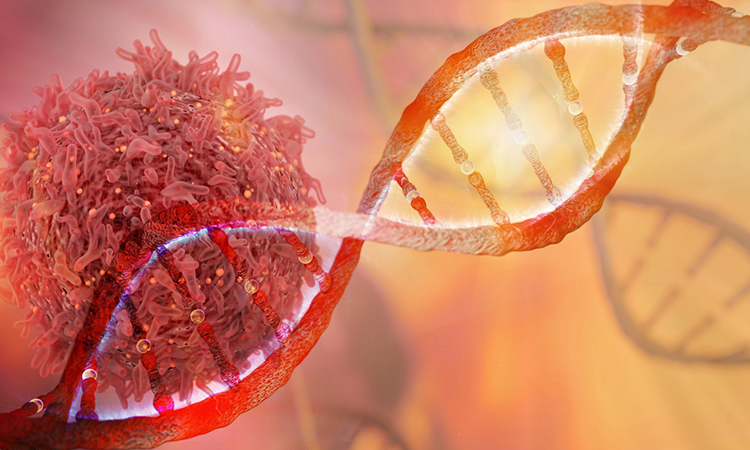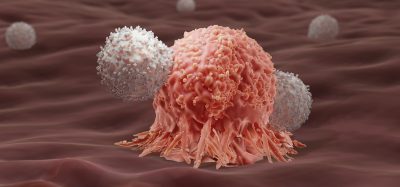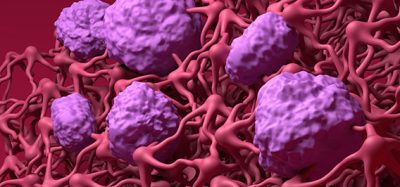Spectra: new insights to improve immunotherapy treatments
Posted: 10 October 2023 | Drug Target Review | No comments yet
New open-source computational method called Spectra improves analysis of single-cell transcriptomic data.

Published in Nature Biotechnology, the team at Memorial Sloan Kettering Cancer Center (MSK) shared their approach and findings by using Spectra to offer new insights into the complex interplay between cells, like the interactions between cancer cells and immune cells, which are essential for improving immunotherapy treatments.
The researchers noted that Spectra can cut through technical “noise” to identify functionally relevant gene expression programmes, including those that are novel or highly specific to a particular biological context.
In the research briefing that accompanies the study, the MSK researchers noted that the algorithm is well suited to analyse data from large patient cohorts and to uncover clinically meaningful patient characteristics. They also add that Spectra is ideal for finding biomarkers and drug targets in the field of immuno-oncology. The team has made Spectra freely available to researchers globally.
The study’s senior author Dana Pe’er, PhD, who chairs the Computational and Systems Biology Program at MSK’s Sloan Kettering Institute said that she is happy to be able to build a foundational tool that can be used by the wider community to make many biological discoveries. Spectra is already used by several institutions to study a number of diseases.
Single-cell technologies
The “single-cell revolution” has transformed human understanding of health and disease. Single-cell technologies enable scientists to study the individual cells in a tissue sample or set of samples such as a tumour. Within these scientists can view the variety of cell types that are present and which genes are active in each cell, which improves knowledge about cell states and cell interactions. The technology has promoted new understandings about how cells adapt and respond to changing conditions in health and disease, including the development of resistance to cancer treatments.
However, single-cell methods generate a huge amount of data which is difficult to analyse and accurately interpret, which Dr Pe’er said is especially true when reviewing gene programmes that are active across multiple cell types in a tissue.
“This is especially important for studying the interactions between cancer cells and immune cells, which involve highly overlapping gene programmes,” Dr Pe’er explained. “This causes some serious statistical problems that can lead to incredibly misleading results.”
Dr Pe’er’s team, led by Russell Kunes, a doctoral student trained in statistics, and Dr Thomas Walle, developed the improved method for data analysis and made a user-friendly interface for other scientists’ ease of use.
Overcoming limitations
The team applied Spectra across two breast cancer immunotherapy data sets and a lung cancer atlas, together totalling more than 1.5 million cells from 375 individuals in 21 studies, showing Spectra’s ability to overcome the limitations of traditional analyses at scale.
Spectra assists the data analysis with a large body of existing scientific knowledge, including libraries of gene programmes generated from previous data by experts. Although this starting knowledge can directly guide single-cell data analysis, the programme also adapts to the data at hand, helping to identify new and modified gene programmes. This adaptive property meant the scientists could uncover a novel cancer invasion programme in tumour-associated macrophages related to anti-PD-1 immunotherapy resistance.
Spectra’s unique design also considers information about the genes that define different cell types, making it more efficient at finding gene programmes that underlie cellular functions, as opposed to cellular identity.
“Spectra, for example, allows us to separate T cells that are exhausted from the tumour-reactive T cells, which are actively fighting a person’s cancer,” Dr Pe’er explained. “And it helps us to see the differences in gene activation between the two — which is quite challenging to unravel in complex contexts like the tumour microenvironment.”
The researchers also comment that discovery will be faster and more streamlined by having the ability to directly transfer gleanings from one data set to another. This will enable scientists to refine knowledge across single-cell sequencing studies without needing complicated data integration.
Related topics
Biomarkers, Computational techniques, Immunotherapy
Related organisations
Memorial Sloan Kettering Cancer Center







